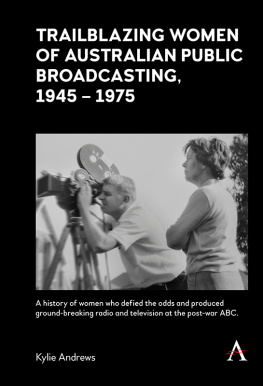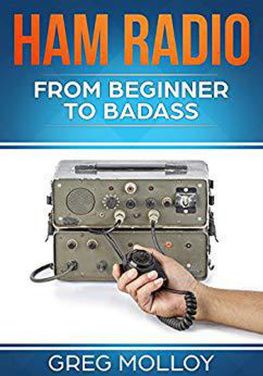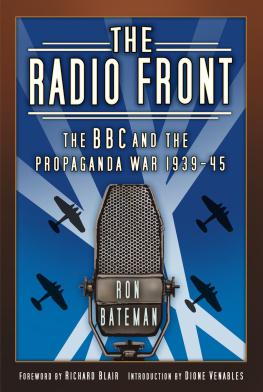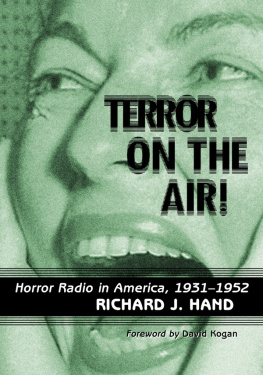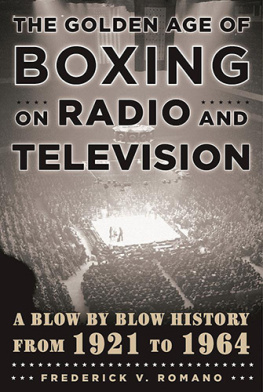ROUTLEDGE LIBRARY EDITIONS: RADIO
Volume 3
The Unseen Voice
First published in 1988 by Routledge
This edition first published in 2017
by Routledge
2 Park Square, Milton Park, Abingdon, Oxon OX14 4RN
and by Routledge
711 Third Avenue, New York, NY 10017
Routledge is an imprint of the Taylor & Francis Group, an informa business
1988 Lesley Johnson
All rights reserved. No part of this book may be reprinted or reproduced or utilised in any form or by any electronic, mechanical, or other means, now known or hereafter invented, including photocopying and recording, or in any information storage or retrieval system, without permission in writing from the publishers.
Trademark notice: Product or corporate names may be trademarks or registered trademarks, and are used only for identification and explanation without intent to infringe.
British Library Cataloguing in Publication Data
A catalogue record for this book is available from the British Library
ISBN: 978-1-138-20918-3 (Set)
ISBN: 978-1-315-44344-7 (Set) (ebk)
ISBN: 978-1-138-20938-1 (Volume 3) (hbk)
ISBN: 978-1-138-20939-8 (Volume 3) (pbk)
ISBN: 978-1-315-45725-3 (Volume 3) (ebk)
Publishers Note
The publisher has gone to great lengths to ensure the quality of this reprint but points out that some imperfections in the original copies may be apparent.
Disclaimer
The publisher has made every effort to trace copyright holders and would welcome correspondence from those they have been unable to trace.
First published in 1988 by
Routledge
11 New Fetter Lane, London EC4P 4EE
1988 Lesley Johnson
Typeset by Castlefield Press, Park Farm Estate, Wellingborough, Northants.
Printed in Great Britain by Richard Clay Ltd, Bungay, Suffolk
All rights reserved. No part of this book may be reprinted or reproduced or utilized in any form or by any electronic, mechanical or other means, now known or hereafter invented, including photocopying and recording, or in any information storage or retrieval system, without permission in writing from the publishers.
British Library Cataloguing in Publication Data
Johnson, Lesley
The unseen voice: a cultural study of early Australian radio.
1. Radio broadcastingAustraliaHistory
I. Title
384.54/0994HE8699.A8
ISBN 0415027632
Contents
I began this project in 1978 as a study of the Australian Broadcasting Commission and Australian intellectuals in the 1930s and 1940s. I quickly became more interested in the beginnings of radio itself and the way in which its cultural tasks were determined for it. This topic raised a far broader range of questions than I began with. I had been interested initially in the role of intellectuals. Instead I turned to questions about the production of culture, the dynamics of popular culture, cultural hierarchies, the relationship between everyday life and the world of politics, and the changes wrought on womens lives, in particular in the two decades before World War II. This book uses those questions to analyse the first two decades of broadcasting in Australia. To do so I have drawn on a range of theoretical material from media studies, cultural studies, sociology, history and womens studies. In the introduction to the book I have discussed a selection of that material to indicate the starting points and framework for my analysis of early Australian radio. I also introduce explicitly theoretical material at times throughout the book. I have attempted to discuss the theoretical literature in such a way as to make that material comprehensible to readers who are not necessarily familiar with the theories.
Gathering material for this study was often difficult and disheartening. I knocked on countless doors and made many fruitless telephone calls, attempting to find material about the broadcasting stations of the 1920s and 1930s, as well as about programme production. Many recordings of programmes have now been rescued and preserved in the National Film and Sound Archives in Canberra, but I wanted to know about the decisions broadcasters made about programming, how they conceptualized the radio audience and how they defined the cultural tasks of radio. I could find little that was still held by the commercial stations themselves, the production companies or the advertising firms, and often the archival material on the Australian Broadcasting Commission was sketchy and poor. The few tentative attempts I made with oral history interviews of people connected with early Australian radio succeeded only in eliciting memories thoroughly contained in the form of reminiscences about the golden age of wireless. I did use some of this material in its printed form; but I decided to forgo any project of oral history myself. But the private papers of F.W. Daniell, who had been a major figure in establishing the Macquarie Broadcasting Services, held in the National Library and the early radio magazines proved to be valuable and exciting sources. This material led me to ask additional questions, such as how both listeners and broadcasters were taught to adapt to radio as a domestic companion, the significance of the radio personality, and broadcastings role in the defining of legitimate politics. These questions did not spring spontaneously from the material itself; they were a result of my theoretical framework, but I did often find myself adapting that framework to the material and returning to the theoretical literature to find ways of understanding the debates and discussions about broadcasting about which I was reading.
For several years I was involved in a slightly different version of this project. I contributed to the 1938 volume of the bicentennial history project, now to be published as a series called The Australians. For that work I was able to draw on the extensive oral history collection made of peoples memories of the 1930s for the 1938 study. I found the project a stimulating exercise, offering opportunities of working at a high level of involvement with other people and of using a different type of material. Again, however, I remained sceptical about the usefulness of oral history for my purposes of understanding the impact of radio on everyday life or popular consciousness. Images of the golden age of wireless and of family life before the age of television have widespread currency today, promoted in particular by the media themselves. The dominance of these images raises fundamental questions about the extent to which peoples memories of early radio and everyday life in the 1920s and 1930s are shaped and mediated by these public histories. Such considerations could be left aside for the 1938 essay because theoretical issues were to be submerged as much as possible in its writings. But for this more substantial work and one which does address questions about how the media form our sense of history and our sense of identity, I felt oral history sources posed too many problems. I am not suggesting that they could not be used (on the contrary), but their use would require the consideration of a wider set of theoretical tasks than I felt able to address in this study. I have provided a reference to my 1938 essay in the bibliography. As well, I have listed there my other publications about radio where I have tried out some of my ideas for this book and used some of the same material.
Throughout the process of doing this study and writing the book I have been assisted by many different people in many different ways. The two people who need the greatest credit for their work in collecting material for the study, for their exciting and insightful comments about that material, and for their continuing interest in and encouragement for my subsequent work are Pauline Johnson and Deborah Tyler. Their work as research assistants on the project demonstrated to me most forcefully the extent to which this category of work is not sufficiently appreciated or rewarded in universities. I have also been assisted by numerous librarians and archivists over the past seven years. I cannot mention them all by name, so will refer to most by their institutions only: archivists at the Australian Archives in Canberra, Melbourne and Sydney; Pat Kelly, Archivist (Documents) for the Australian Broadcasting Commission (now Corporation); archivists in the British Broadcasting Corporations Written Archives; librarians in the manuscripts section of the National Library; librarians in the Mitchell Library; and Geoffrey Holden, Curator of Communications, Museum of Victoria.


